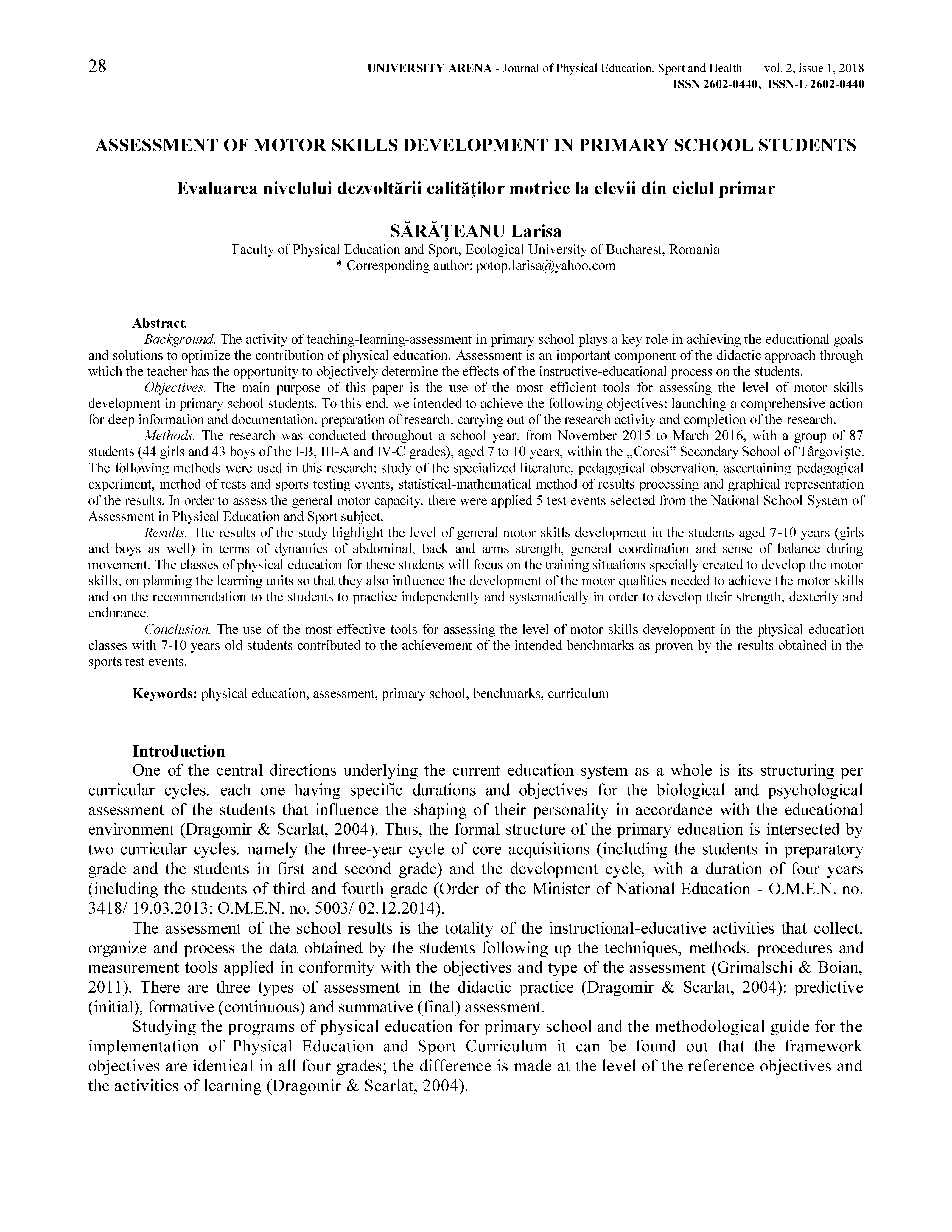ASSESSMENT OF MOTOR SKILLS DEVELOPMENT IN PRIMARY SCHOOL STUDENTS
DOI:
https://doi.org/10.62229/UaII_1_18-5Keywords:
physical education, assessment, primary school, benchmarks, curriculumAbstract
Background. The activity of teaching-learning-assessment in primary school plays a key role in achieving the educational goals and solutions to optimize the contribution of physical education. Assessment is an important component of the didactic approach through which the teacher has the opportunity to objectively determine the effects of the instructive-educational process on the students.
Objectives. The main purpose of this paper is the use of the most efficient tools for assessing the level of motor skills development in primary school students. To this end, we intended to achieve the following objectives: launching a comprehensive action for deep information and documentation, preparation of research, carrying out of the research activity and completion of the research.
Methods. The research was conducted throughout a school year, from November 2015 to March 2016, with a group of 87 students (44 girls and 43 boys of the I-B, III-A and IV-C grades), aged 7 to 10 years, within the ,,Coresi” Secondary School of Târgoviște. The following methods were used in this research: study of the specialized literature, pedagogical observation, ascertaining pedagogical experiment, method of tests and sports testing events, statistical-mathematical method of results processing and graphical representation of the results. In order to assess the general motor capacity, there were applied 5 test events selected from the National School System of Assessment in Physical Education and Sport subject.
Results. The results of the study highlight the level of general motor skills development in the students aged 7-10 years (girls and boys as well) in terms of dynamics of abdominal, back and arms strength, general coordination and sense of balance during movement. The classes of physical education for these students will focus on the training situations specially created to develop the motor skills, on planning the learning units so that they also influence the development of the motor qualities needed to achieve the motor skills and on the recommendation to the students to practice independently and systematically in order to develop their strength, dexterity and endurance.
Conclusion. The use of the most effective tools for assessing the level of motor skills development in the physical education classes with 7-10 years old students contributed to the achievement of the intended benchmarks as proven by the results obtained in the sports test events.


